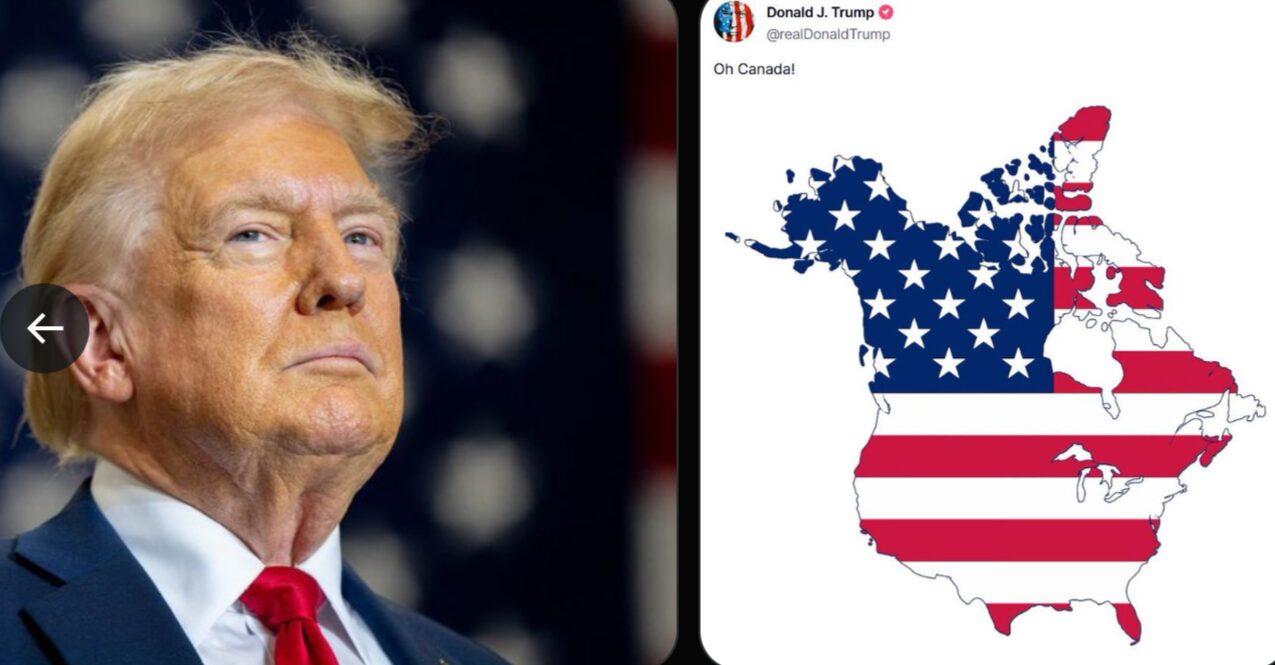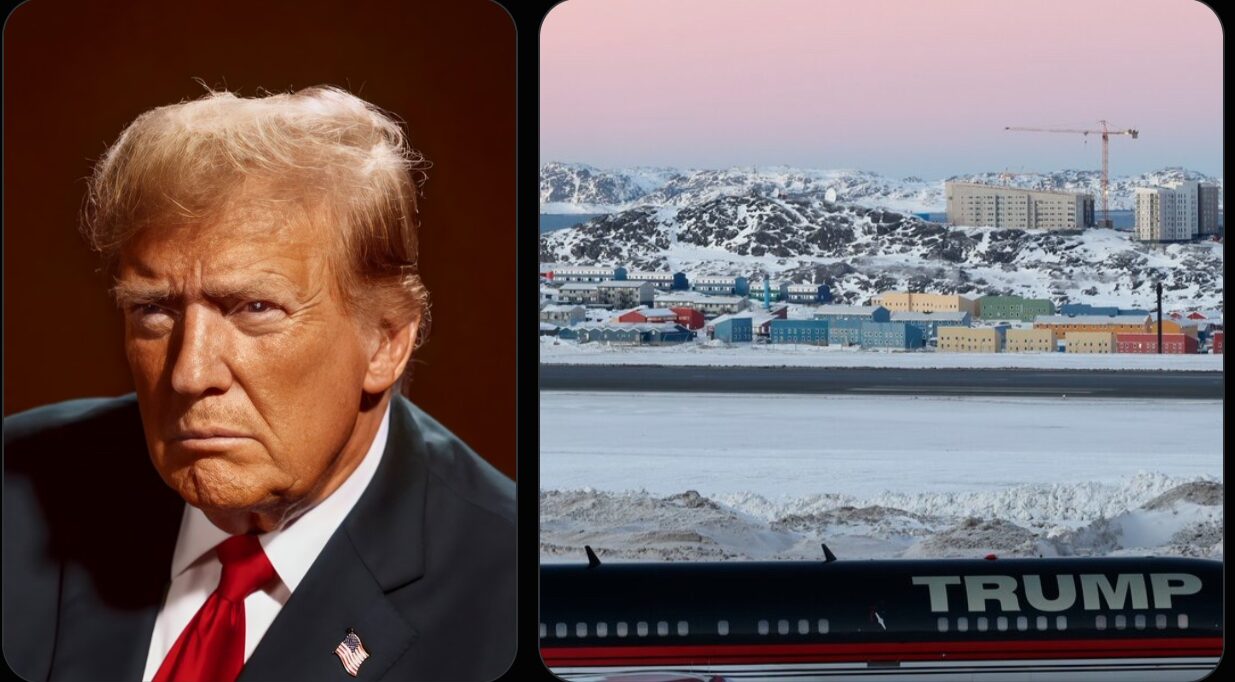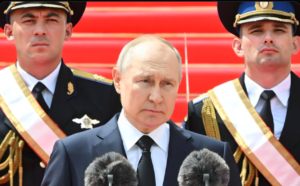President Trump shares new map with Canada as part of the United States
President Trump Shares New Map with Canada as Part of the United States: A Controversial Move with Implications
In a move that has left both political analysts and citizens puzzled, former President Donald Trump recently shared a controversial new map suggesting that Canada should be considered part of the United States. This map, which has sparked intense debate, raises questions about U.S.-Canada relations, the future of North American geopolitics, and the potential ramifications for international diplomacy.
The New Map: A Bold Proposal or a Publicity Stunt?
The map in question, shared on social media platforms and during a series of public statements by President Trump, shows an altered North America where Canada is integrated into the United States as a new set of states. This image, described by critics as provocative, has garnered significant media attention, with many interpreting it as a bold, yet unfeasible, proposal for North American unity.
While some may view the map as a humorous or exaggerated form of political discourse, others have raised concerns about the message it sends. Trump’s history of unconventional statements and bold claims, particularly regarding international relations, has often sparked debates about his true intentions. The timing of this map’s release—following significant tensions in U.S.-Canada relations during his presidency—adds another layer of complexity to its meaning.
The Historical Context of U.S.-Canada Relations
The idea of merging the United States and Canada is not a new one. Throughout history, there have been moments when the integration of the two countries was discussed, but these ideas have always been met with resistance on both sides of the border. The relationship between the U.S. and Canada is characterized by deep economic ties, cultural exchanges, and shared border security, yet both nations have distinct identities and political systems.
During Trump’s presidency, the U.S.-Canada relationship was often strained, particularly in areas related to trade and immigration. The renegotiation of NAFTA (North American Free Trade Agreement), which Trump succeeded in turning into the United States-Mexico-Canada Agreement (USMCA), was one such point of contention. Although the USMCA aimed to benefit both U.S. and Canadian interests, Trump’s rhetoric surrounding these negotiations was frequently critical of Canada, adding tension to an otherwise amicable bilateral relationship.
Trump’s latest map suggestion may be seen as an extension of this earlier discourse. However, it also raises broader questions about the future of the North American continent and the way the U.S. views its international neighbors.
Why the Map is Causing a Stir
The public reaction to Trump’s map has been mixed. On the one hand, some supporters of the former president may view it as a symbolic gesture, reflecting a desire for a closer, more unified North America. For some, the idea of Canada joining the U.S. could be seen as a logical extension of the economic and security cooperation between the two nations.
On the other hand, critics argue that such a proposal undermines the sovereignty of Canada, an independent and proud nation with its own cultural and political identity. Canada, which has long been an ally of the U.S., is distinct in its social policies, governance, and international relations. For many Canadians, the idea of merging with the U.S. represents an erosion of their autonomy.
Moreover, the map sparks concerns about the future of international diplomacy. In a time when global cooperation and multilateralism are key to addressing pressing issues like climate change, trade, and security, suggesting the dissolution of borders between two countries—especially those as significant as the U.S. and Canada—raises troubling questions about the principles of national self-determination and the respect for international boundaries.
What Does This Mean for the Future of North America?
While the idea of Canada joining the U.S. as a part of a larger political entity is highly unlikely, the conversation surrounding it may still have broader implications for the future of North American relations. Here are some of the potential outcomes and effects:
1. Impact on U.S.-Canada Diplomatic Relations
Though President Trump is no longer in office, his influence on U.S.-Canada relations remains significant. The map may be seen as a provocative reminder of his administration’s tendency to blur the lines of diplomacy and push boundaries. Current President Joe Biden’s administration, which has sought to rebuild trust and foster cooperation with Canada, may need to address this new controversy diplomatically. However, it’s important to note that the idea of merging the two countries is unrealistic and unlikely to gain traction in the political mainstream.
2. Reigniting Nationalist Sentiments
Trump’s map could also reignite nationalist sentiments on both sides of the border. In Canada, the notion of becoming a part of the United States could strengthen feelings of Canadian nationalism, reinforcing the desire for independence and national pride. Similarly, within the U.S., some might interpret the idea of annexing Canada as a call for American exceptionalism—a belief that the U.S. is entitled to expand its influence and territory at the expense of neighboring nations.
These kinds of political statements often provoke emotional responses from citizens who are deeply invested in their national identities. For Canada, the issue of sovereignty and autonomy remains a fundamental value, and any suggestion that the country could lose its independence would be seen as highly contentious.
3. A Shift in Trade and Economic Ties
Economically, both the U.S. and Canada benefit from a close trade relationship, which is governed by the USMCA. Canada is one of the U.S.’s largest trading partners, and the two countries share extensive trade in goods and services. Any major changes to this relationship, such as the idea of Canada becoming a part of the U.S., could have serious implications for the structure of trade agreements and the movement of goods across the continent.
However, the likelihood of such a dramatic shift is slim. Trade between the U.S. and Canada will continue to be driven by economic needs rather than political boundaries, and any proposals to alter the structure of this relationship would require careful negotiation and buy-in from both governments.
4. The Global Reaction
Internationally, Trump’s map may be seen as a symbolic gesture, but it could also strain relations with other countries that view it as a destabilizing force. The international community, particularly countries in Europe and Latin America, may take issue with the idea of one nation absorbing another. It could spark concerns about imperialism and the erosion of established international norms.
Conclusion: A Controversial and Symbolic Gesture
While President Trump’s new map featuring Canada as part of the United States is unlikely to lead to any significant political changes, it serves as a provocative reminder of his unorthodox approach to diplomacy and geopolitics. The reaction to the map underscores the deep-seated national identities that exist on both sides of the U.S.-Canada border, as well as the importance of respecting national sovereignty and maintaining strong diplomatic relationships.
In the grand scheme of things, this new map may be viewed more as a symbolic gesture or a publicity stunt rather than a legitimate proposal. Nevertheless, it has reignited conversations about the future of North American cooperation, the role of national boundaries, and the complexities of cross-border relationships. As the world continues to navigate complex geopolitical challenges, it’s clear that the future of U.S.-Canada relations will be shaped by mutual respect and the pursuit of shared goals—regardless of the speculative maps that may appear along the way.

















Post Comment